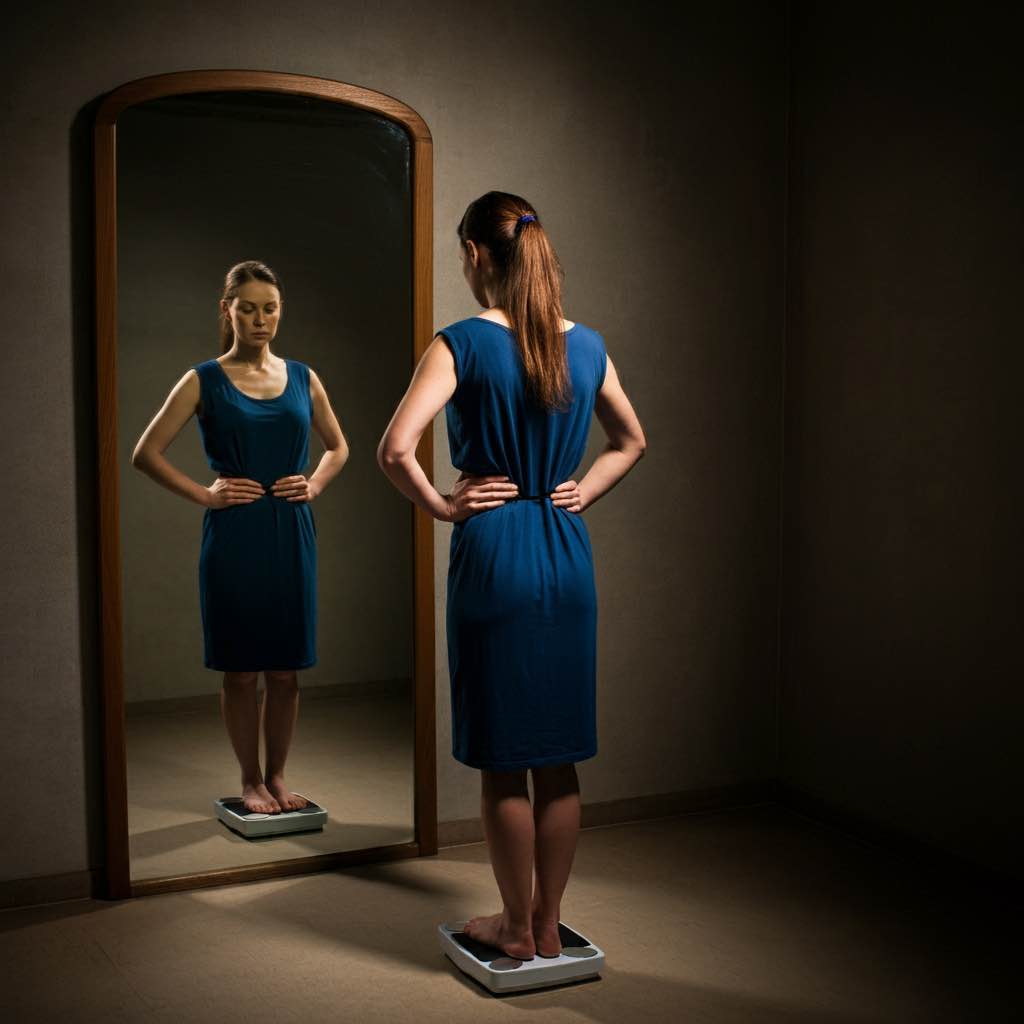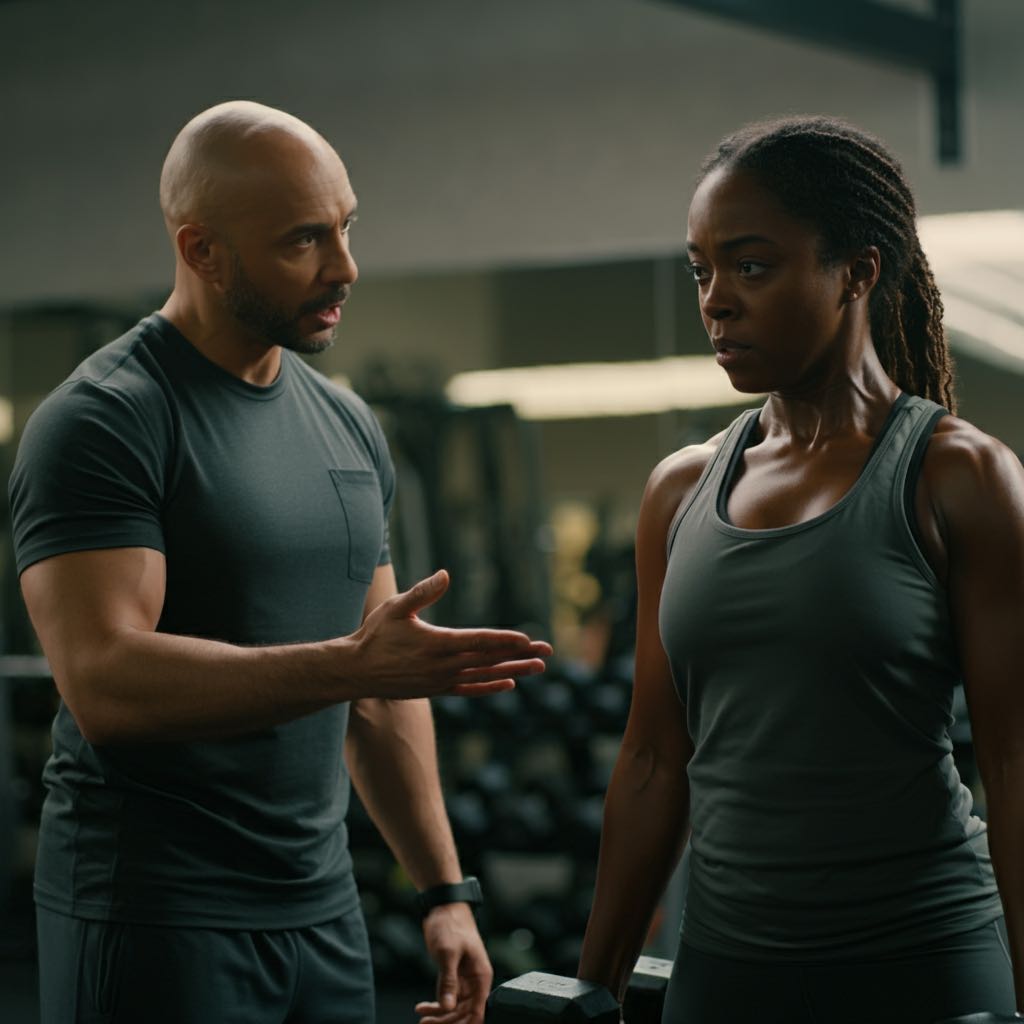Every day, you hit the gym with the best intentions and a positive attitude to reach the coveted physical and mental well-being. However, you may unknowingly fall into common traps that could hinder your progress, leading to unsatisfactory results.
Look. The line between effective and counterproductive can be thin.
Many gym goers, from beginners to seasoned athletes, commit cardinal sins that undermine their efforts and send what they’ve accomplished to the rubbish bin.
Read on to learn how to identify and correct these workout errors to see the results you’ve been working towards.
Today’s Focus of Attention is reader-supported. We sometimes include products we think are useful for our readers. If you buy through links on this page, we may earn a small commission.
7 Deadly Sins That Crush Your Progress
The Sin of Sloth: Skipping Warm-Ups and Cool-Downs
This is a recipe for disaster. Under no circumstances should you step into the temple and load up a barbell at once.
We understand you’re eager to go for heavy lifting, but warm-up exercises lay the foundation for the workout ahead.
The reasons? Well, because these pre-workout movements increase blood flow to muscles, raise heart rate, improve flexibility (oiling joints), and reduce the risk of injury.
Likewise, after every exercise session, cool-down routines help the body catch up by lowering cardiac frequency, preventing stiffness, and recovering muscles.
What to do? Spend 5-10 minutes to dynamic stretching, light cardio, or foam rolling before diving into your main workout.

The Sin of Gluttony: Overtraining

More is not always better when it comes to physical fitness.
You’re vigorous and want to see results faster. But pushing yourself to the brink without rest is a sure path to injury and, in no time, frustration.
Overtraining is like sprinting a marathon and leads to:
- Burnout
- Fatigue
- Plateaus
- The likelihood of traumas.
How do you know you are overexerting? Listen to your body! Signals are:
- Chronic soreness
- Mood swings
- Excessive panting
- Muscle cramps
- Dizziness
- Diminished strength or endurance
What to do? Prioritise a balanced workout plan with rest days to allow muscles to recover, repair, and grow.
Also, to prevent overuse injuries, add variety and include active recovery strategies such as stretching, yoga, or light cardio.
The Sin of Greed: Are You Lifting Too Heavy, Too Soon?
Leave your pride at the gym’s door. Exceeding your lifting capacity for your current strength level is a fast track to injury.
While pumping iron builds muscles, overestimating your robustness might result in strains or sprains. If that happened, you’d have to stop working out and lose everything you’ve accomplished.
What to do? Focus on proper form, and bit by bit, add more plates as you get stronger. As simple as that.
The Sin of Pride: Neglecting Nutrition
You will not have optimal performance without a balanced diet. And by diet, we mean eating right to energise your body when you need it the most.
Pre- and post-workout food influences energy levels, recovery, and the ability to reach your fitness goals. Are you having enough protein for muscle repair or sufficient carbohydrates to replenish glycogen?
Undernourishment causes:
| Muscle loss |
| General fatigue |
| Dizziness while at the gym |
Muscles need protein to heal, carbs for energy, and fats for hormone balance. So, avoid skipping meals or indulging in processed foods, as they will derail your fitness journey.
What to do? Focus on consuming a balanced diet rich in lean proteins, complex carbohydrates, and beneficial lipids. Here’s a short list of suggested wholesome foods (consult your doctor or dietitian first):
| Lean Protein |
|---|
| Poultry: chicken and turkey breast |
| Fish: salmon, tuna, cod |
| Beef: lean cuts (flank or round steak) |
| Eggs |
| Dairy: Greek yoghurt, cottage cheese |
| Plant-based: Tofu, tempeh, edamame |
| Complex Carbohydrates |
|---|
| Whole Grains: brown rice, quinoa, oats, whole-wheat bread, whole-grain pasta |
| Starchy vegetables: sweet potatoes, peas |
| Legumes: lentils, chickpeas, black and kidney beans |
| Healthy Fats |
|---|
| Avocados |
| Nuts and Seeds: almonds, walnuts, chia, flaxseeds |
| Olive oil |
| Fatty fish: salmon, mackerel, sardines, tuna |
At the same time, avoid sugar-laden products and consider supplements if necessary to bridge any nutritional gaps (ask your doctor).
The Sin of Envy: Comparing Yourself to Others
This is the worst thing ever you can do; it is detrimental to your motivation and self-esteem.
Everyone’s fitness journey is unique, so peering through the distorted lens of the Instagram models or the gym rats next to you makes no sense.
If you want to compare, do it with the one you were one month before.
Focus on becoming the best version of yourself and celebrate your personal achievements.
The Sin of Wrath: Ignoring Pain
Aching is a way your body signals that something needs attention.
Constant pressure on an injury worsens aches or creates new ones.
Let’s say you ignore a soreness on your left elbow while lifting dumbbells.
Forcing it might hinder your ability to do other exercises and cause a sprain or fracture.
Apart from that, the healing of deep damage lasts longer, and you’d have to stop your training altogether, impacting your whole fitness activities.
What to do? Listen to your body.
In the event of discomfort on legs, thighs, joints, elbows, wrists, or feet, just pause and seek professional advice to fix it right away.
The Sin of Lust: Obsessing Over the Scale

The number you see on the weighing machine doesn’t tell the whole story. Rather, pay attention to:
- Mood
- Better-fitting clothes
- Easier breathing
- Increased stamina levels
- Overall progress
These are the real indicators of improvement, not weight.
It’s easy to become obsessed with the look in the mirror, but focussing only on aesthetics may cause frustration.
Don’t forget that fitness not only improves physical health but also mental clarity and quality of life.
What to do? Shift your mindset to set realistic goals that aim at performance, endurance, and flexibility. Celebrate small victories and remember that the voyage is just as important as the destination.
8 Workout Mistakes That Hinder Your Fitness Journey
Workout Mistake 1: Ignoring Dehydration
Water is crucial for optimal performance; it keeps joints and the body well oiled. But running dry leads to fatigue, constant dizziness (in case you didn’t know), muscle cramps, and, as a result, fruitless and exhausting training.
Imagine driving a car with no oil—the engine will sputter and fade to silence.
Have plenty of fluids throughout the day, especially before, during, and after working out. For intense or prolonged routines, talk to your doctor about electrolyte drinks.
How Much Water Should I Drink During a Workout?
The exact amount to avoid dehydration varies depending on these factors:
- Intensity and duration of exercise
- Climate and temperature
- Individual body size and sweat rate
However, general guidelines suggest:
- Drinking 500-600 ml 1-2 hours before workout
- 250-300 ml 15 minutes before starting
- 250 ml every quarter of an hour during routines

Of course, if you feel thirsty, drink more. But do not exceed the limits since it also leads to other problems.
Overhydration
Known as ‘water intoxication’, this phenomenon occurs when you consume more liquids than your body can process, giving rise to serious health consequences. Key risks include:
Hyponatremia
This dangerous condition appears when sodium levels drop too low, disrupting the body’s fluid stability.
Disruption of Electrolyte Balance (sodium, potassium, magnesium)
When dissolved in the blood, electrolytes conduct electricity necessary for nerve function, muscle contraction, arterial tension, sugar regulation, as well as healthy bones.
Swelling of Brain Cells
Excess water might cause neurones to expand, resulting in confusion, seizures, and, in extreme cases, coma or death.
Overhydration disrupts their equilibrium, leading to some of these indicators:
| Symptoms of Overhydration |
|---|
| Nausea and vomiting |
| Headaches |
| Confusion or disorientation |
| Muscle weakness or cramps |
| Inflammation in hands, feet, or ankles |
| Rapid breathing |
| Seizures (in severe cases) |
If you experience any of these signs, seek medical attention forthwith.
Workout Mistake 2: Lack of Variety
Doing the same routines over and over week after week leads to boredom, plateaus, and, in the short run, demotivation.
What to do? Keeps things interesting.
| Integrate different types of exercises |
| Try new classes |
| Challenge yourself with fresh fitness goals |
Note of concern: A repeated activity mutates into a comfort zone, and nothing good results from being in a cosy space. So, with the swiftness of a fleeting breath, leave this area and advance in your journey.
Workout Mistake 3: Inconsistency-Commitment is Key
Sticking to a consistent plan is fundamental. If you don’t allocate specific hours for physical training, you won’t grow.
Consider fitness as a long-life relationship, not a short-term fling; you’ve got to be steadfast to it every single day.
Workout Mistake 4: Not Resting Enough
Rest is paramount, regardless of the exercise blueprint. No rest, no progress.
Adequate breaks allow muscles to repair, recover, and grow. However, many gym enthusiasts overtrain, thinking that it puts them on a fast track.
Rather, what they get is fatigue, reduced performance, and heightened injury risk. This is not how to succeed.
What to do? Incorporate time off into your schedule and listen to your body when it says, “Stop, mate. I need a break.”
Workout Mistake 5: Not Setting Realistic Goals
The SMART approach teaches us that every goal must be:
| Specific |
| Measurable |
| Achievable |
| Relevant |
| Time-bound |
So, if you’re eager to slim down, be clear about how to get there. A plane with no destination never touches land. Take this as an example: “I want to shed pounds” is a vague intention.
On the flip side, “This month, I will lose 3 kilos and build my arm muscles with bench presses, 30-minute cardio, and lifting 8 kilos dumbbells” is an explicit objective.
Rapid transformations are quite rare, and expecting to slim down or bulk up in a jiffy, as claimed by a myriad of infomercials, is a myth.
The best way to keep the sands of time in your favour and reach your fitness goals is to celebrate small wins.
For instance, last week you lifted 8 kilos, but this one you did 10. That’s an accomplishment worthy of applause.
Don’t rush, mate; Rome wasn’t built in one day. Just enjoy the journey with a smile and a sunny outlook. Changes will come, and you’ll be happy once you notice them.
Workout Mistake 6: Neglecting Cardio
Strength training alone won’t suffice for a balanced fitness regimen; you need cardiovascular exercises.
If for any reason you omitted aerobic activities, you’d be affecting the pumping of blood and oxygen to your organs, leading to:
| Poor endurance |
| Circulatory risks |
| Missed opportunities to burn extra calories |
What to do? Aim for a mix of high-intensity interval training (HIIT) and steady state cardio, such as cycling, to keep your heart at its peak. To be aware of your physical shape, check your cardiovascular condition and, if necessary, adapt routines to your specific circumstances.
Workout Mistake 7: Chasing Fads Over Function
Be wary of fitness trends, diets, and equipment that promise weight loss or muscle gain as if touched by magic.
We are tired of those infomercials promising an athletic body while sitting on a couch. They don’t and will never work.
Besides, they make you lazier. You’ve got to sweat. That’s it.
Talk to your trainer and ask for concrete recommendations.
In the case of working out from home, a myriad of genuine YouTube videos show detailed routines to reach any goal.
Focus on what’s real. Fitness takes time, but it’s totally worth it.
Common Fads
| Extreme diets like keto, paleo, or juice cleanses offering rapid weight loss |
| Expensive detox and cleansing products with a lack of scientific evidence |
| Spot reduction claiming to fry fat in specific areas |
| Miracle pills and supplements promising to torch calories or boost metabolism without effort |
Weight loss and muscle gain require a mix of regular exercise, a balanced diet, and adequate rest. There’s no such thing as a magic silver bullet.
Workout Mistake 8: Ignoring Compound Exercises–Missing Out on Full-Body Benefits

Isolation exercises (bicep curls, tricep and leg extensions, calf raises) play their role in your fitness goal without the shadow of a doubt.
But relying on them alone overlooks the rewards of compound movements, such as:
- Squats
- Deadlifts
- Bench presses
- Overhead presses
- Rows
These multi-joint efforts recruit more muscles, burn more calories, and build overall strength.
What to do? Integrate them into your routine and see how efficient they are and how they speed up your progress.
Now that you are aware of the most common sins and mistakes at the gym, it is time to consider levelling up with a personal trainer. But first, let’s examine the advantages and disadvantages this model brings.
What Are the Pros and Cons of Personal Training?
A bespoke coach escorts every step of your fitness journey. Sounds great, innit?
He shows you the proper way to lift dumbbells, the correct angle and position of legs, knees, and elbows, foods to boost performance, as well as how often to hydrate.
This is a paradigm shift in achieving specific physical goals and wellness.
But, as with anything, it comes with its own set of advantages and disadvantages. Let’s take a tour of this arena and explore whether it is right for you.

What is Personal Training?
This is when a certified professional designs a customised workout plan adapted to your needs and factors in:
- Your goals
- Current fitness level
- Any physical limitations
Types of Personal Training
- One-on-one
- Small groups
- Online
- Specialised
- In-home
- Senior
- Hybrid
What to Look for in a Personal Trainer
A knowledgeable instructor must have a deep knowledge of anatomy and nutrition, along with the ability to connect, inspire, and communicate effectively with clients.
Moreover, they should change routines as needed and uphold high standards of professionalism and ethics.
Now, let’s move forward with personal training’s strengths and weaknesses.
Pros of Personal Training
| Tailored workouts for specific body types and fitness objectives |
| The individualised schedule keeps you committed |
| Trainers explain the correct form to prevent injuries |
| They boost morale by pushing limits |
| You capitalise on your time by focussing on effective exercises |
Cons of Personal Training
| The cost is higher ($50/month gym membership vs. $50/PT hour) |
| Over-reliance on a coach might restrict building self-discipline |
| Finding a trainer who fits your schedule could be challenging |
When is the Best Time to Exercise?
This is a subject of dispute. While there’s no single “best time,” science suggests that certain times may offer advantages based on goals and preferences.
Morning Exercise
- Improved Metabolism: A 2019 study published in Metabolism found that exercising in the morning increases fat oxidation.
- Enhanced Mood and Reduced Stress: In 2018, Psychoneuroendocrinology discovered that early-hour routines were linked to lower levels of cortisol, the stress hormone, during the daytime.
- Better Sleep: The Journal of Strength and Conditioning Research showed that AM exercises improved sleep quality in individuals with insomnia.

Afternoon Exercise
- Peak Performance: Analyses indicate that most people experience a natural surge of energy in the afternoon, which is ideal for high-intensity training.
- Increased Endurance: The Journal of Applied Physiology noticed that athletes who trained at this time of the day achieved higher VO2 max levels compared to those working out in the morning.
Evening Exercise
- Stress Relief: At these hours, regular physical activity reduces anxiety.
- Improved Sleep: While morning routines also help with sleeping issues, some individuals find that sunset workouts are better for them.
- Flexibility and Range of Motion: The body’s temperature is typically higher at nightfall, perfect for stretching and yoga.
In the end, the golden moment is the one that fits into your schedule and you’re most likely to stick to. Experimenting at different times helps you decide what works for your body and lifestyle.
The Importance of Sleep for Weight Loss
While diet and exercise take the spotlight in fitness journeys, sleep exerts a profound but often overlooked impact. Enough quality sleep is not just about feeling refreshed; it’s essential for:
Hormonal Regulation
Leptin and Ghrelin
The American Journal of Clinical Nutrition found that sleep deprivation suppresses leptin – fulness hormone – and elevates ghrelin – hunger regulator – inducing insatiable appetite and cravings.
Cortisol
As reported in the Journal of Clinical Endocrinology & Metabolism, sleeplessness triggers this stress hormone’s levels, leading to increased fat storage, above all in the abdominal area.
Metabolic Control
Insulin Sensitivity
Not sleeping well makes cells less sensitive to insulin, which regulates blood sugar. In this situation, the likelihood of developing type 2 diabetes rises.
The journal Diabetologia demonstrated that inadequate rest displayed impaired glucose intolerance and decreased insulin responsiveness.
Energy Levels and Motivation
Lack of sleep affects your physical functioning, endurance, and recovery. Muscle soreness and fatigue may also increase.
A meta-analysis in Sports Medicine discovered that diminished power output, slowed reaction times, and reduced stamina result from poor rest.
On its side, Behavioural Sleep Medicine observed that individuals with not enough resting time were more lethargic and less inclined to engage in any physical activity.
Growth Hormone
Sleep deprivation reduces the production of this chemical messenger, hindering muscle gain and promoting body fat accumulation.
The American Journal of Physiology found that resting only four hours at night lowered this catalyst by 30%.
Overall, adequate sleep is fundamental for optimising weight loss and wellness aspirations. Aim for 7-9 hours at night to improve your ability to burn fat, build muscle, and come back stronger.
Well, there you are: seven deadly sins and eight gym mistakes to stay away from. With warm-ups, nutrition, hydration, and variety, you maximise your workout effectiveness and enjoy a rewarding adventure.
Start implementing these tips today and watch a real transformation. Remember, fitness is a journey, not a sprint.
Are you guilty of any of these gym sins? Share your experience in the comments.


